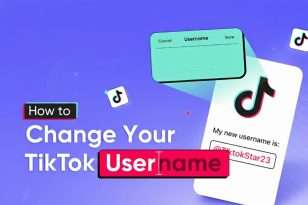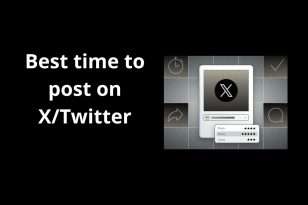If you’re just starting out as an Etsy seller, you’ve probably asked yourself: “Why are my profits lower than expected?” The answer usually comes down to Etsy fees. In 2025, understanding every Etsy fee — from listing and transaction charges to offsite ads and payment processing — is essential if you want to price your products right and protect your profits.
Many new sellers underestimate how these costs add up, but once you break them down and plan ahead, Etsy can still be one of the most profitable platforms for creative entrepreneurs. This guide in Orichi Trending explains every Etsy fee in 2025, shows real examples, and gives you smart strategies to maximize your margins while staying competitive.

Etsy Fees Overview: What Every Seller Needs to Know in 2025
When new sellers make their first sale, they’re often surprised by how much Etsy takes. The truth is, Etsy fees can seem confusing at first — but they’re simply the cost of running a business on a major global marketplace. Every Etsy fee serves a purpose: helping you access millions of buyers, manage payments securely, and promote your products through ads and discovery tools.
In 2025, Etsy has streamlined its fee structure into a few main categories: setup, listing, transaction, payment processing, advertising, and optional subscriptions. Each one affects your profit margin differently, and knowing them helps you set accurate prices. Many new sellers underestimate the impact of small recurring costs like the $0.20 listing fee or the 6.5% transaction fee, which can quietly reduce profit if not calculated in advance.
Understanding Etsy fees means you can plan smarter. When you factor in all costs and use data-driven pricing strategies, you turn what seems like a complex system into a predictable business model. The goal isn’t to avoid fees — it’s to master them so your shop stays profitable and competitive in the growing 2025 Etsy marketplace.

Etsy Setup Fee — Is It Still $29 in 2025?
When you open a new Etsy shop, you’ll encounter the Etsy setup fee, a one-time payment required to launch your store. As of 2025, this fee remains $29, though Etsy reserves the right to adjust it depending on market conditions or promotional campaigns. Occasionally, new-seller incentives or seasonal promotions may waive this initial charge, making it easier for beginners to start selling without upfront costs.
The setup fee is non-refundable and ensures your account is verified, activated, and eligible for Etsy’s seller tools. Think of it as an entry ticket to a global marketplace where your products can reach millions of active buyers. While some may see this as a barrier, it’s actually a small investment in long-term visibility, payment protection, and shop credibility.
Smart sellers plan this cost into their startup budget alongside branding, photography, and initial listings. Whether you’re a first-time seller or expanding from another platform, knowing exactly what the Etsy setup fee covers helps you prepare financially and start your journey on the right foot in 2025’s competitive ecommerce environment.
Etsy Listing Fee Explained: Why You Pay $0.20 Per Product
Every time you list a product on Etsy, you pay a $0.20 listing fee, one of the platform’s core costs for sellers. This small charge applies to every item published in your shop and is valid for four months or until the product sells. When the listing expires or sells out, you’ll pay another $0.20 to renew it, either automatically or manually. If you sell multiple quantities of the same item, Etsy charges the fee for each additional sale.
At first, this may seem like a minor cost, but over time it adds up — especially for sellers with large inventories or high turnover. The Etsy listing fee supports listing visibility, product hosting, and platform maintenance. Keeping your listings active ensures that your products remain searchable, which directly impacts sales performance.
For most shop owners, enabling automatic renewals is a smart move to avoid downtime when a product sells out. In a marketplace where trends move fast, even a short gap in availability can cost potential sales. By understanding how listing fees work and factoring them into your pricing strategy, you protect your margins and maintain continuous visibility in Etsy’s 2025 marketplace.
Etsy Transaction Fee (6.5%): What It Covers and How It’s Calculated
Etsy charges a 6.5% transaction fee on every sale, and understanding how it’s applied is key to protecting your profit margin. This fee is calculated based on the total item price, including shipping and gift wrapping if offered. For U.S. sellers, the percentage does not include sales tax, but for international sellers, it usually does. Essentially, Etsy takes this cut as a commission for facilitating your sale, managing the marketplace infrastructure, and giving your shop access to a global audience.
In 2025, this Etsy transaction fee remains consistent across most product categories, helping sellers predict expenses more accurately. It funds core services such as secure payment processing, platform upkeep, and customer support, ensuring a smooth buying experience for both sellers and shoppers.
To maintain profitability, factor the 6.5% into your pricing formula from the start. Many top-performing sellers use profit calculators or spreadsheets to model their total costs before setting a price. When you treat the Etsy transaction fee as part of your overall business expense, you can price strategically, stay competitive, and keep your profit steady as the ecommerce landscape evolves.
Etsy Payment Processing Fees in 2025 (3% + $0.25 per order)
In 2025, Etsy continues to charge a payment processing fee of 3% plus $0.25 per order for U.S. sellers. This fee applies to the total amount paid by the customer — including the product price, shipping, and taxes. It covers the cost of securely handling payments through Etsy Payments, ensuring smooth and protected transactions for both buyers and sellers.
While 3% may sound small, it can add up quickly across multiple orders, so understanding this fee is crucial when calculating your true profit margins. The Etsy payment processing fee varies slightly by country, as local regulations and banking systems differ, but the structure remains similar worldwide.
This charge is separate from the transaction fee and is automatically deducted before your earnings are deposited. Think of it as Etsy’s built-in safeguard — covering credit card processing, fraud prevention, and payment reconciliation. To stay profitable, include these costs when setting prices. When managed strategically, this small percentage is simply the cost of doing business on a platform that delivers global reach, secure payments, and buyer trust in 2025.
Etsy Advertising Fees: Etsy Ads vs Offsite Ads (12%–15%)
Etsy offers two main advertising options in 2025 — Etsy Ads and Offsite Ads — each with different fee structures and strategic uses.
Etsy Ads run within the platform, appearing in search results and category pages. You set your own daily budget and pay per click, allowing full control over how much you spend and where your listings appear. This type of ad is ideal for boosting visibility on specific products or testing new designs before scaling your shop’s reach.
Offsite Ads, on the other hand, promote your listings on external platforms like Google, Facebook, and Pinterest. Etsy charges 15% of the sale price for sellers who’ve earned under $10,000 in lifetime sales, and 12% once you exceed that threshold. Below $10K, participation is optional; above $10K, it becomes mandatory. These ads extend your exposure to audiences outside Etsy, helping attract new buyers.
To get the best ROI, sellers should track performance closely and use ads strategically — focusing on listings with strong conversion potential. Understanding how these Etsy advertising fees work allows you to balance visibility and profitability while scaling your brand effectively in 2025.
Optional Subscription Fees: Etsy Plus & Pattern Website Builder
Etsy provides optional subscription plans for sellers who want more control and customization: Etsy Plus and Pattern. These aren’t mandatory, but they can enhance your brand’s visibility and professionalism when used strategically.
Etsy Plus, priced at $10 per month, includes perks like custom shop banners, featured listing credits, and restock alerts for customers. It’s designed for sellers ready to scale their store and create a more polished shopping experience. The added branding options and credits can help increase visibility within Etsy search results, giving sellers an edge over standard accounts.
Pattern, Etsy’s website builder, costs $15 per month after a free trial. It allows sellers to build a standalone ecommerce site that syncs directly with their Etsy shop inventory. This is useful for sellers looking to expand their brand beyond the marketplace while keeping centralized management.
Both subscriptions are optional, but they cater to sellers who see Etsy not just as a platform, but as a long-term business hub. Understanding how these Etsy subscription fees align with your growth goals ensures you’re investing in features that truly add value in 2025.
In-Person Sales on Etsy: Square Fees and Synced Listings
For sellers who participate in craft fairs, markets, or pop-up shops, Etsy supports in-person sales through its integration with Square. This feature allows you to sync your Etsy listings and manage both online and offline sales seamlessly from one dashboard.
Each synced listing sold in person incurs a $0.20 fee, just like a regular Etsy listing. If the listing isn’t synced, you’ll still pay the manual renewal fee of $0.20 when it’s sold. The main difference is that in-person transactions don’t include Etsy’s 6.5% transaction fee — instead, you’ll pay Square’s standard processing fee for handling the payment.
This integration helps you keep your inventory consistent across platforms, preventing overselling or stock discrepancies. For sellers who often attend physical events, it simplifies bookkeeping and ensures every sale counts toward your shop’s analytics.
By leveraging Etsy and Square together, you can extend your brand presence beyond the screen while maintaining a professional sales process. It’s a smart way to blend digital convenience with real-world customer engagement in 2025’s hybrid retail landscape.
Etsy Shipping Label Costs — How to Save on USPS, UPS, and FedEx Rates
When it comes to fulfillment, Etsy lets sellers purchase shipping labels directly through the platform — a feature that can save both time and money. In 2025, you can buy discounted labels from carriers like USPS, UPS, and FedEx via your Etsy Shop Manager. These labels are usually cheaper than retail rates because Etsy negotiates bulk pricing, giving sellers access to commercial discounts not available at the post office or shipping store.
The process is simple: when a customer places an order and pays for shipping, you use that payment to buy a label directly through Etsy. The cost depends on the carrier, package size, weight, and delivery destination. Etsy automatically deducts the fee from your balance, streamlining your workflow.
To maximize savings, always compare carrier rates before finalizing a label and choose package dimensions carefully. Small adjustments in weight or box size can reduce costs significantly. By using Etsy’s built-in shipping tools, you ensure faster processing, tracking integration, and lower expenses — helping you deliver efficiently while protecting your margins in 2025’s competitive ecommerce environment.
Hidden Etsy Fees You Should Know About (Currency, VAT, Regulatory)
Beyond the main costs, sellers should be aware of a few hidden Etsy fees that can quietly affect profits if overlooked. The first is the currency conversion fee, which is 2.5% whenever your shop’s listing currency differs from your bank account currency. This fee can be avoided by matching both currencies — a simple adjustment that keeps more money in your pocket.
Next is the regulatory operations fee, applied in certain countries to cover compliance and marketplace regulation costs. Though typically small, it varies by region, so it’s best to review Etsy’s official fee policy to see if your country is affected.
Lastly, Etsy may apply VAT or sales tax on fees themselves, depending on your location and local tax laws. This means you could pay tax not just on your sales, but also on the Etsy fees charged to your account.
Staying informed about these smaller charges ensures you understand the true cost of doing business. By proactively managing currency, tax, and compliance-related Etsy fees, you maintain pricing accuracy, reduce unexpected deductions, and protect your earnings as an Etsy seller in 2025.
Real Example: How Much Profit You Actually Keep on a $30 Sale
Let’s break down a realistic Etsy fee example so you can see how much profit actually stays in your pocket. Suppose you sell a $30 t-shirt with $5 shipping, bringing your total sale to $35.
Here’s how the fees work:
- Transaction fee (6.5%) → $2.28
- Payment processing fee (3% + $0.25) → $1.30
- Listing fee → $0.20
That’s a total of $3.78 in Etsy fees. If your production cost is $8, your net profit comes to around $18.22.
This example highlights why it’s essential to price your items strategically. Even small fees add up quickly, especially as sales volume grows. By planning ahead and including these charges in your pricing formula, you can maintain consistent profit margins.
Smart sellers treat fees as part of their cost structure, not as losses. When calculated correctly, you’ll find that Etsy’s built-in audience and marketing reach more than justify the costs — turning each sale into a sustainable profit driver in 2025.
How to Calculate Etsy Fees and Plan for Profit Margins
To stay profitable on Etsy in 2025, you must understand how to calculate your total Etsy fees and build pricing that safeguards your margins. Start by listing all applicable fees: the $0.20 listing fee, 6.5% transaction fee, 3% + $0.25 payment processing fee, and any optional advertising or subscription costs. Add these up to estimate your total cost per sale.
For example, on a $35 transaction, these combined fees equal about $3.78. If your product costs $8 to produce, you can calculate your profit margin as: (Selling Price – Total Fees – Production Cost) ÷ Selling Price × 100. This formula helps you determine exactly how much profit you retain from each order.
Successful sellers use spreadsheets or Etsy fee calculators to model different pricing scenarios. The key is to price for profit, not just for competitiveness. When you factor in all Etsy fees up front, you can confidently scale your business, run promotions, and reinvest in marketing — without losing control of your bottom line. A clear fee strategy transforms uncertainty into predictable, sustainable growth.
Etsy Pricing Strategy 2025 — How to Price Smart and Stay Profitable
A strong Etsy pricing strategy in 2025 starts with understanding every fee that affects your bottom line. Many new sellers price too low, forgetting to account for transaction, processing, and listing fees — which can quietly eat into profits. Smart pricing means setting rates that reflect both your product’s value and the true cost of doing business.
Begin by calculating your total cost per item, including materials, labor, packaging, and Etsy fees. Then, add a reasonable profit margin that aligns with your niche and market demand. Use data-driven tools like Etsy Analytics or keyword insights to identify how similar products are priced and where your listing can stand out.
Incorporate psychological pricing strategies — such as ending prices in .99 or bundling related items — to improve conversion rates without hurting your profit. Finally, review your pricing quarterly to adjust for changes in fees, shipping, or market trends.
By combining strategic calculation with smart positioning, you ensure your products remain both competitive and profitable. A thoughtful Etsy pricing plan isn’t just about covering costs — it’s the foundation for sustainable success and long-term growth in 2025’s evolving ecommerce marketplace.
Are Etsy Fees Worth It? Pros, Cons, and Seller Tips for 2025
Whether Etsy fees are worth it in 2025 depends on how you view them — as an expense or as an investment in visibility, trust, and convenience. The pros are clear: Etsy provides access to millions of active buyers, built-in payment protection, reliable customer support, and powerful SEO exposure without needing your own website. These features save time and marketing costs while helping new sellers gain traction quickly.
The cons, however, come from cumulative costs. Listing, transaction, and advertising fees can add up, especially for sellers with slim margins. Some also find offsite ad fees restrictive once their shop surpasses $10K in sales, as participation becomes mandatory.
Still, for most creators, Etsy remains a cost-effective platform compared to running independent ecommerce sites. The key is to manage fees proactively — price strategically, track analytics, and use promotions only when they drive real ROI.
Ultimately, Etsy fees are the cost of tapping into a trusted global ecosystem. For sellers who plan carefully, focus on branding, and optimize listings, the return far outweighs the expense, making Etsy one of the best marketplaces to grow a creative business in 2025.
Free Etsy Shop Setup Checklist (Downloadable Resource)
Before launching your shop, use this free Etsy Shop Setup Checklist to ensure everything is optimized for success in 2025. Starting strong means fewer mistakes, smoother operations, and faster sales growth.
Step 1: Prepare Your Brand – Choose a memorable shop name, logo, and banner that reflect your niche. Write a compelling bio and shop description using clear, keyword-rich language.
Step 2: Create Your Listings – Upload high-quality product photos, write detailed descriptions, and include relevant tags and attributes. Don’t forget to price your items after factoring in all Etsy fees.
Step 3: Set Up Payments and Policies – Enable Etsy Payments, define shipping profiles, and clearly outline refund or exchange policies to build buyer trust.
Step 4: Optimize for Search – Use SEO tools to research keywords, update titles, and keep your listings fresh.
Step 5: Launch and Promote – Announce your shop on social media, join Etsy communities, and test ads strategically once your listings start performing.
FAQ
What fees does Etsy charge per sale in 2025?
Etsy charges three main fees per sale:
- Listing fee: $0.20 for each item you post.
- Transaction fee: 6.5% of the item price (including shipping).
- Payment processing fee: 3% + $0.25 per order.
Optional costs include Etsy Ads and Offsite Ads if you promote your products.
Does Etsy take a percentage of shipping costs?
Yes. The 6.5% transaction fee applies to both the product price and the shipping cost you charge to customers.
How to avoid unnecessary Etsy fees
- Match your shop’s currency with your bank to skip the 2.5% conversion fee.
- Only promote listings that already sell well.
- Turn off auto-renew for slow items.
- Include all fees when setting your prices to avoid surprise losses.
How to handle offsite ad charges after reaching $10K in sales
When your shop earns over $10,000, you’re automatically enrolled in Offsite Ads and can’t opt out. The fee drops from 15% to 12%, so your rate gets better as you grow. Always include this cost in your pricing.
Is Etsy still profitable in 2025 after all fees?
Yes. Even with the fees, Etsy remains profitable for sellers who price their items correctly and manage costs. The platform brings huge traffic and trust — things that are expensive to build on your own.
How to price your products to include Etsy fees
Add up all your costs: product cost, shipping, and Etsy fees. Then, set a selling price that leaves room for profit. Example: If your total cost is $15 and you want a 50% profit margin, your price should be around $30.
![]()










